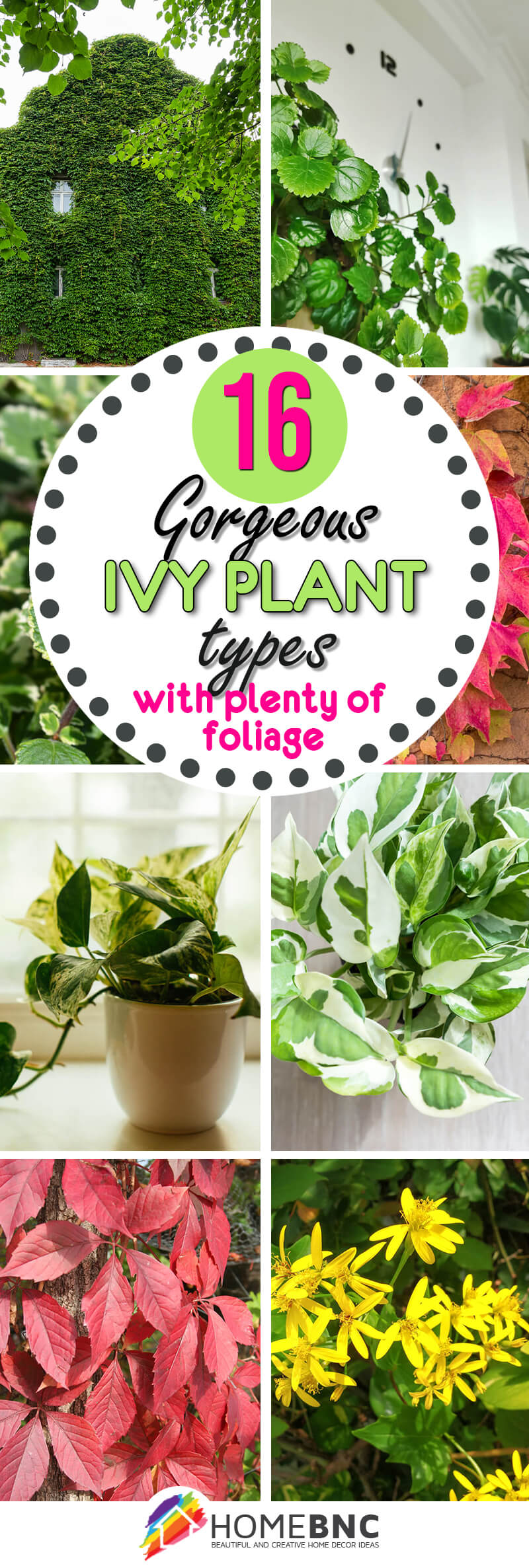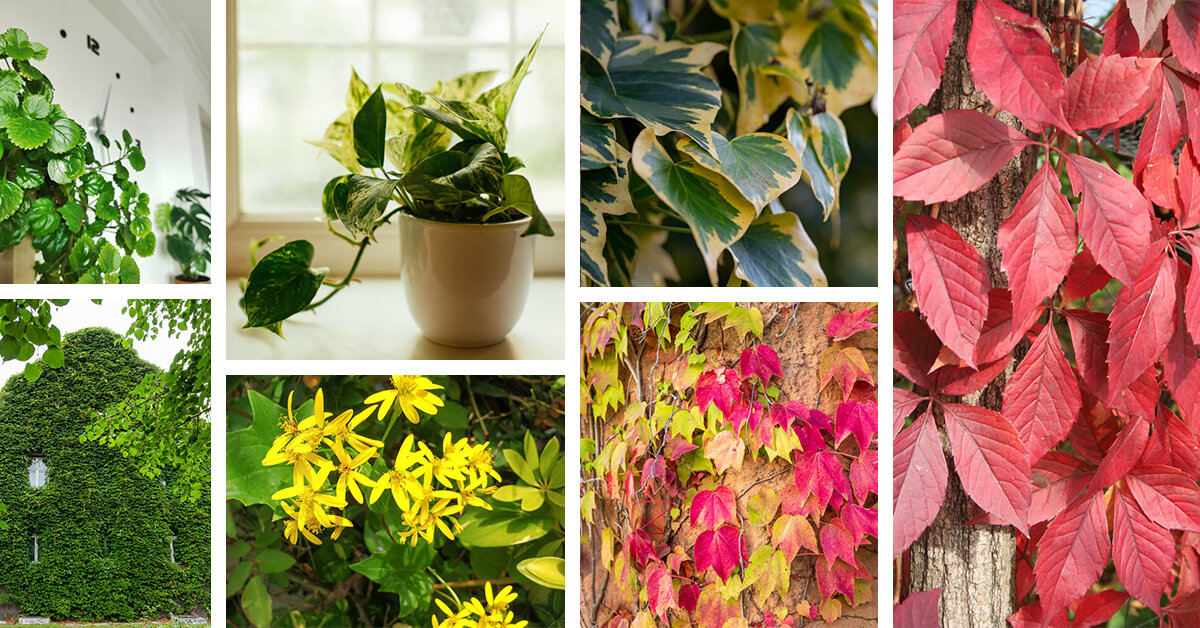For gardeners seeking a climbing plant or ground cover with foliage that will impress as well, ivy plants are often the answer. Ivy vines are equally well-known for their incredible ability to climb structures as they are for the fascinating shapes and color patterns that their leaves can hold. True ivy plants all come from the Hedera genus. Within that genus, there are several species and cultivated varieties of those species, all of which we can accurately call ivies in a technical sense. But with that said, there are also plenty of plants that we commonly refer to as ivies that are not actually a part of the official ivy genus. Since each of those plant groups is home to many incredible and interesting types of ivy plants, we’ve decided to include both on this list.
Key Takeaways
Even though ivy plants are incredibly common and popular, there is a chance that you may not know much about them. Due to that reality, this article is more than a simple list of the most prevalent ivy varieties. It is also a chance to learn about ivy plants as a whole. In keeping with that goal, you’ll find the following five major takeaways that appear throughout this list.
- True ivy plants are species and cultivars that belong to the Hedera genus.
- There are plants outside of the Hedera genus that have ivy as part of their common name.
- Ivy plants have incredible foliage as their main ornamental feature.
- Most, if not all, ivy plants are toxic to some degree.
- Many ivy plants use small suction cups to attach themselves to walls and other structures.
16 Climbing Ivy Plants that Make Your Garden Look Lusher than Ever
1. English Ivy (Hedera helix)
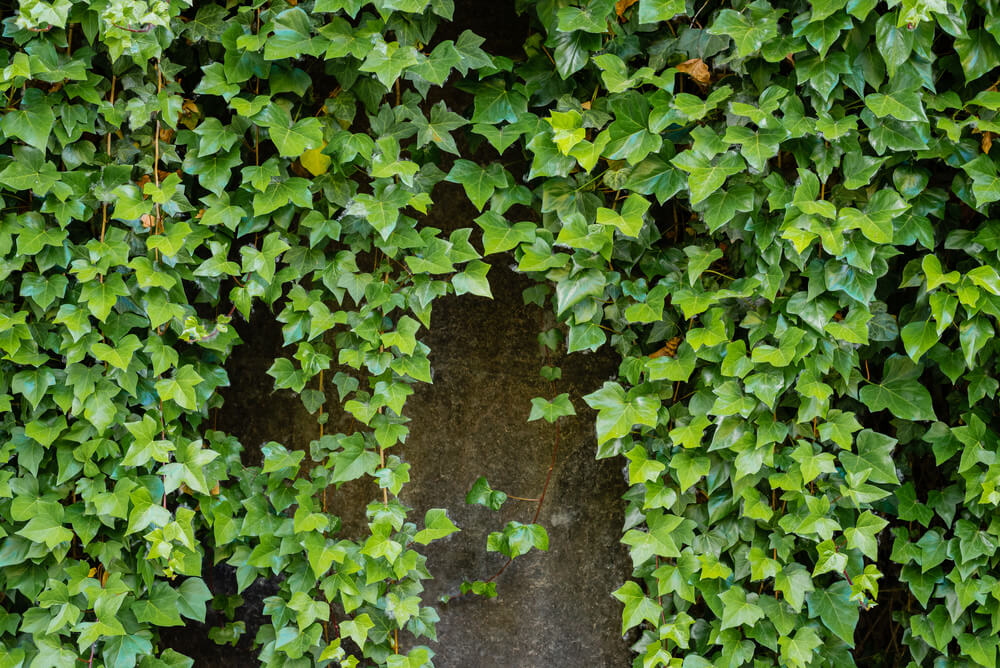
There is absolutely no better way to start a list of ivy plants than with the English ivy plant. In many ways, English ivy is the quintessential ivy and the one that people refer to most often. Likewise, the English ivy species, Hedera helix, is the parent species of many popular cultivated ivy varieties, some of which you will learn about momentarily. As is generally true of its cultivars, this parent ivy species is a woody, perennial vine with amazing broad evergreen foliage. Those leaves are the most prominent ornamental feature of the English ivy plant, and there is plenty of reason to love them. Each leaf has a distinct trident shape and usually has a rich dark green color interspersed with light grey veins. If you want to claim yourself as an ivy enthusiast, then English ivy is one of the plants you certainly need to know.
2. Baltic Ivy (Hedera helix’ Baltica’)
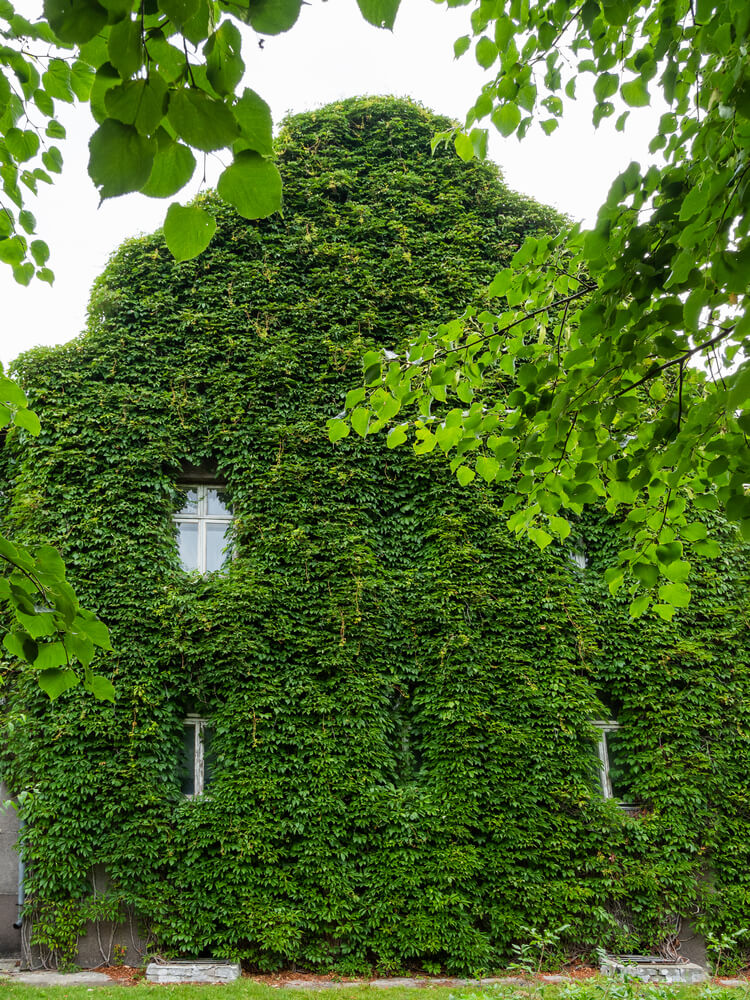
Baltic ivy is the second of a few Hedera helix cultivars that you’ll see on this list, and it is one of the ones that bear the most striking resemblance to its parent species. That resemblance may make it tough for you to distinguish this plant from English ivy since their leaves can be nearly identical. Baltic ivy also features other traits that are common to most English ivy cultivars. Mainly, they are incredibly adaptive to different amounts of sunlight and different soil varieties. Baltic ivy, and other ivies, are also fast-growing plants that make for reliable ground covers.
3. Gold Child Variegated Ivy (Hedera helix’ Gold Child’)
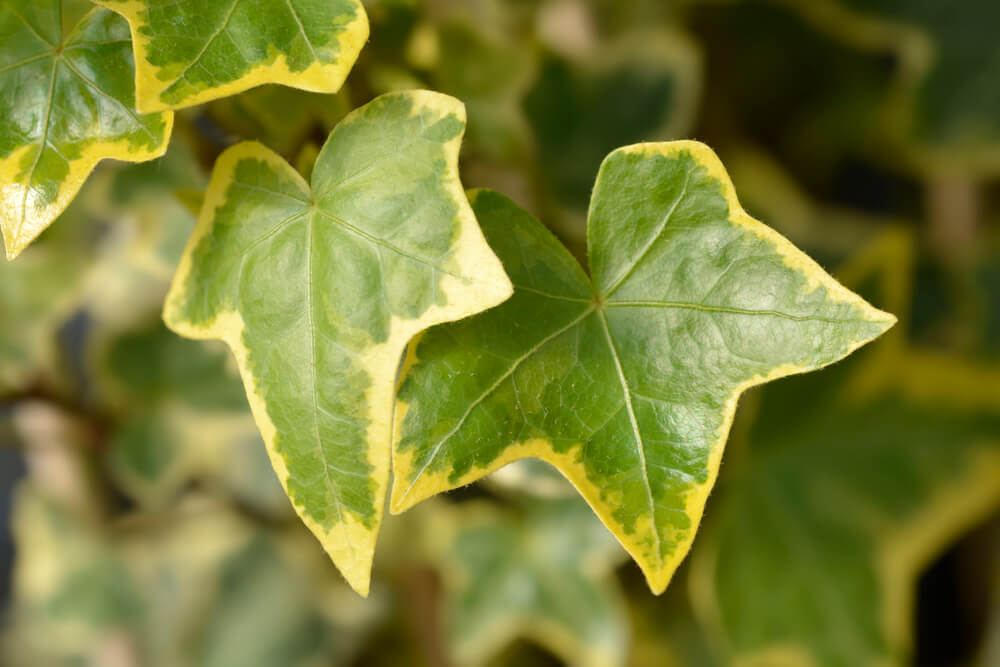
This third entry on our list is the first of two gold-themed ivy varieties. This one goes by the name gold child variegated ivy, and it is easy to see why. The leaves of this plant have an exaggerated trident shape and feature multiple colors at once. Most of the central portions of each leaf are dark green, similar to the leaf color of most other plants. Meanwhile, the margins have a strong gold color that gives this plant its unique appearance. For anyone who wants a bit more color in their ivy plants, the gold child variegated ivy plant is a great option.
4. Gold Heart Variegated Ivy (Hedera helix’ Gold Heart’)
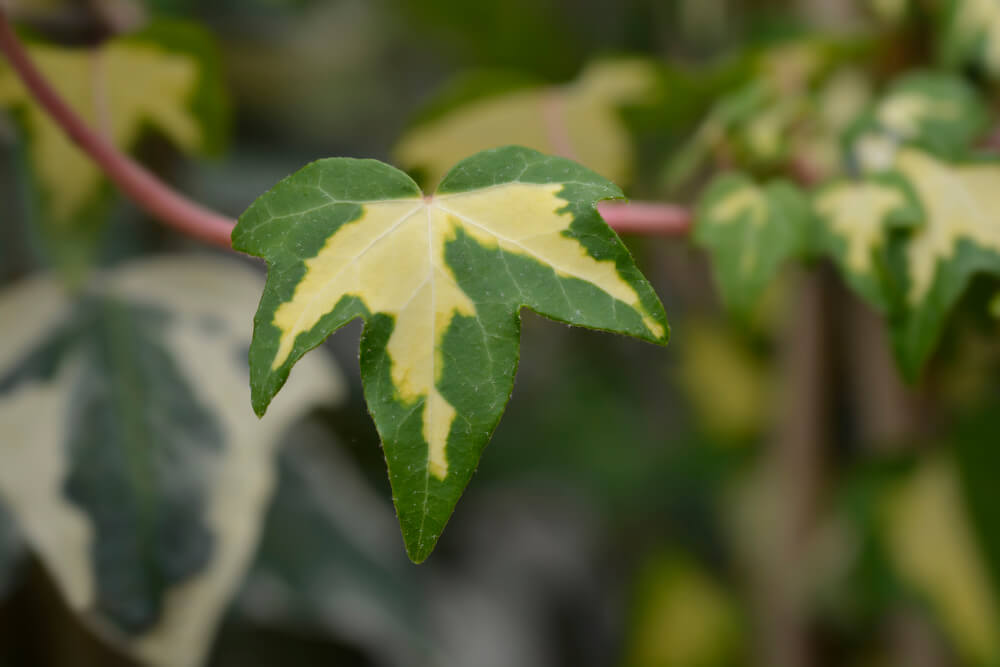
The gold heart variegated ivy picks up on the theme from our last entry. However, the color pattern of the gold heart variety is much different from that of the gold child variegated ivy plant. While the gold child has gold markings on the edges of its leaves with green in the middle, the gold heart’s pattern is the opposite. It has large patches of light gold in the center of each leaf and dark green margins. The gold heart variegated ivy plant also has a different leaf shape that is more rounded and heart-like than it is similar to a trident.
5. Variegated Algerian Ivy (Hedera algeriensis ‘Gloire de Marengo’)
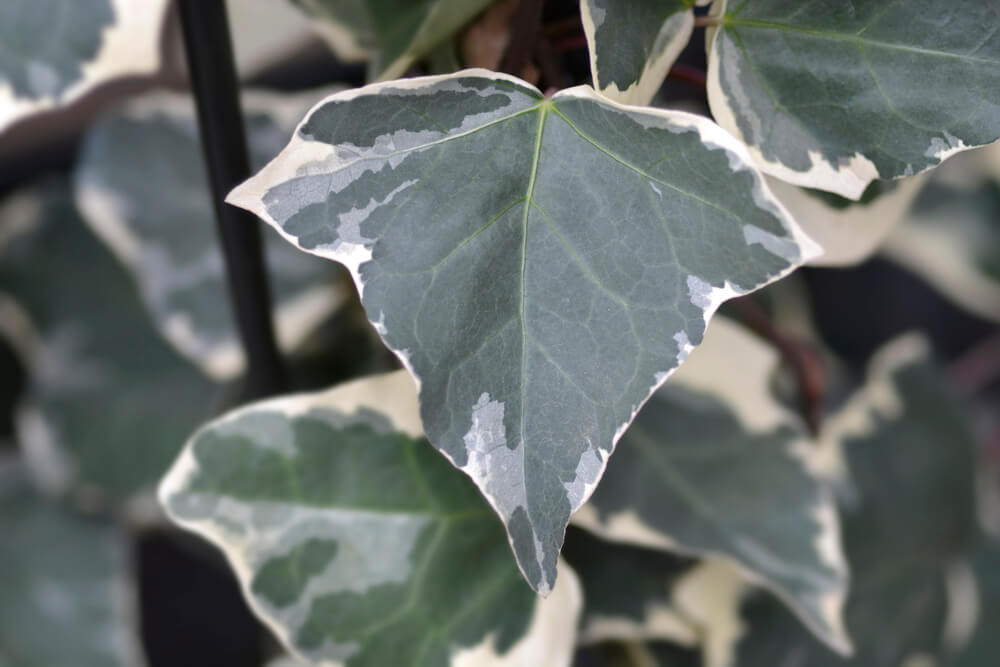
There may be a bit of confusion that arises due to this and the next entry on our list. Both plants share a very similar common name, but they are entirely different species within the Hedera genus. This plant, variegated Algerian ivy, is a cultivar that goes by the botanical name Hedera algeriensis ‘Gloire de Marengo’, the latter portion of which refers to a town in Algeria that once went by the name Marengo. This plant has a brilliant color pattern that consists of large splotches of green and white as its main ornamental feature.
6. Algerian Ivy (Hedera canariensis)

This plant, Hedera canariensis, also goes by the name Algerian ivy and is as valuable of an ivy plant as any other that we have mentioned. Algerian ivy is an excellent, fast-growing climber, and it can act as ground cover as well. Its leaves have a consistent green shade that is a bit lighter and more muted than the color of other ivy plants. This plant also builds on the theme of easy maintenance, as it is incredibly easy to care for and keep alive. Algerian ivy also proves to have fantastic shade tolerance, even among other shade-tolerant ivies.
7. Variegated Persian Ivy (Hedera colchica ‘Dentata Variegata’)
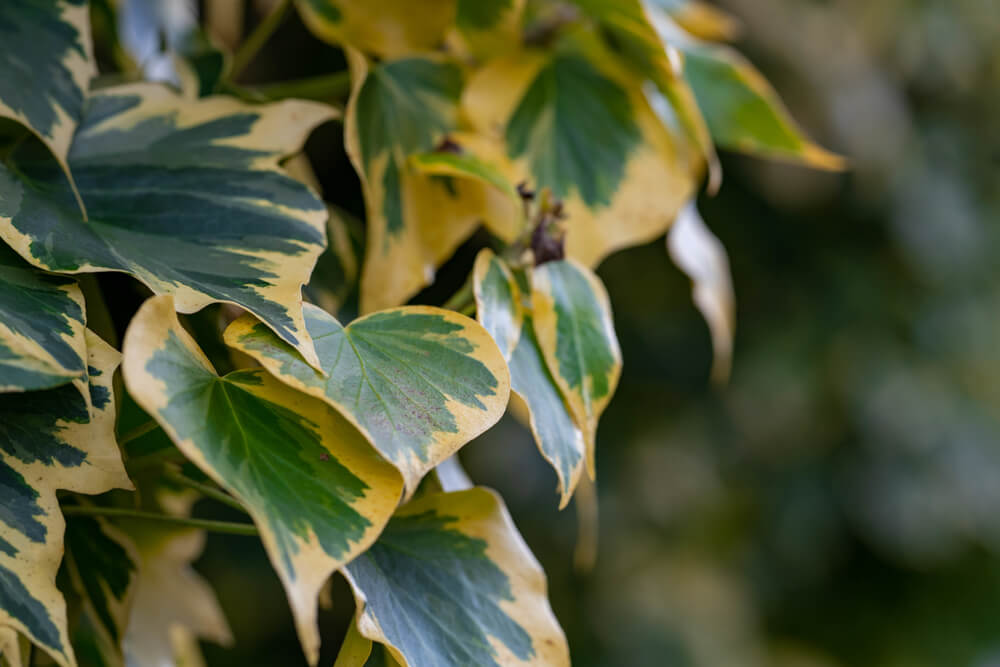
The variegated Persian ivy plant continues to prove that ivies are not only incredibly attractive but also very durable. This specific cultivar has large patches of creamy white at the margins of its leaves. That white color fades in stages until it becomes dark green at the center. Along with that mesmerizing appearance, the variegated Persian ivy also stands out for being very dependable. It is resistant to deer browsing, tolerant of shaded growing areas, and needs only moderate amounts of water to thrive. By following a simple care routine, you can easily grow a variegated Persian ivy plant that reaches more than 40 feet tall.
8. Irish Ivy (Hedera hibernica)
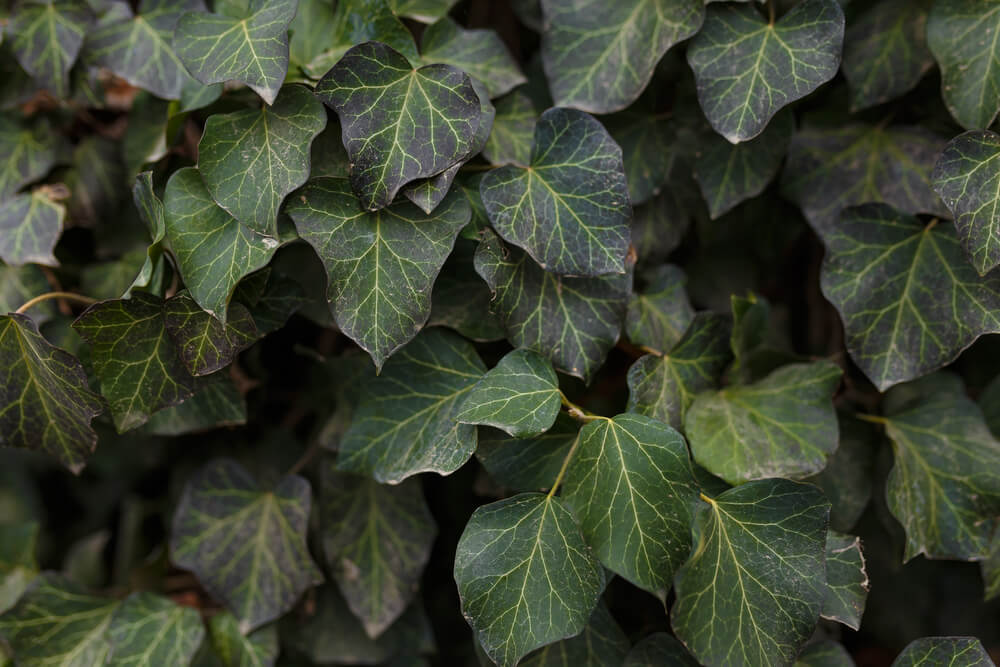
The Irish ivy plant is the last of the true ivies on our list. However, it is certainly not the least. Irish ivy can go by a few different names, one of the most prominent of which is Atlantic ivy. But no matter what you choose to call this plant, you are likely to enjoy growing it if ivies are your plant group of choice. The Irish ivy plant has trident-shaped leaves, but those leaves tend to be a bit broader than those of other ivy plants. The color of the leaves also tends to be somewhat lighter than related ivy species.
9. Devil’s Ivy (Epipremmum aureum)
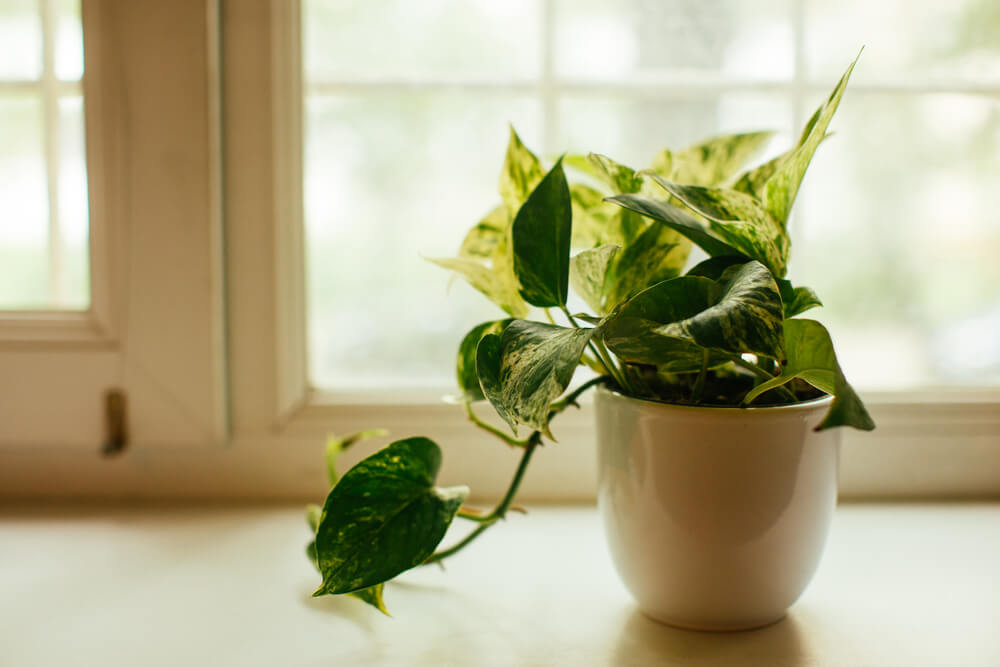
This marks a pivotal point for this list. While all of the plants we mentioned previously are true ivies in a technical sense, all of the plants we mention from now on are ivies in their common names only. Despite that, these plants are well worth mentioning since many gardeners casually consider them to be within the ivy plant group. In this instance, it is no hyperbole to say that the plant known as Devil’s ivy is one of the most popular indoor plants in the world. This plant grows quickly, even when it has minimal access to light. It also has beautiful glossy leaves that appear in great numbers as the plant matures. Overall, those traits make Devil’s ivy the perfect plant for anyone who believes they lack a green thumb.
10. Marble Queen Devil’s Ivy (Epipremmum aureum’ Marble Queen’)
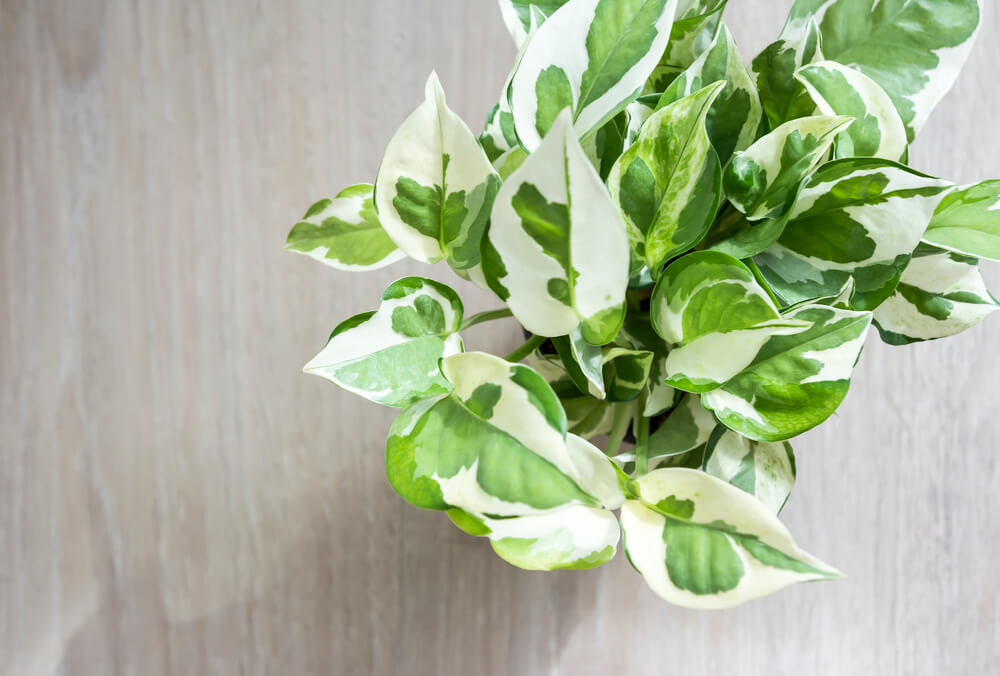
You may have noticed that many of the plants we’ve shared have both original species versions and cultivated versions that show different leaf traits. Such is the case for Devil’s ivy as well. This plant, marble queen devil’s ivy, has a name that implies what its leaves look like. Rather than having a consistent green color, the marble queen devil’s ivy has a marbled appearance that blends shades of light green with stark white.
11. German Ivy (Delairea odorata)
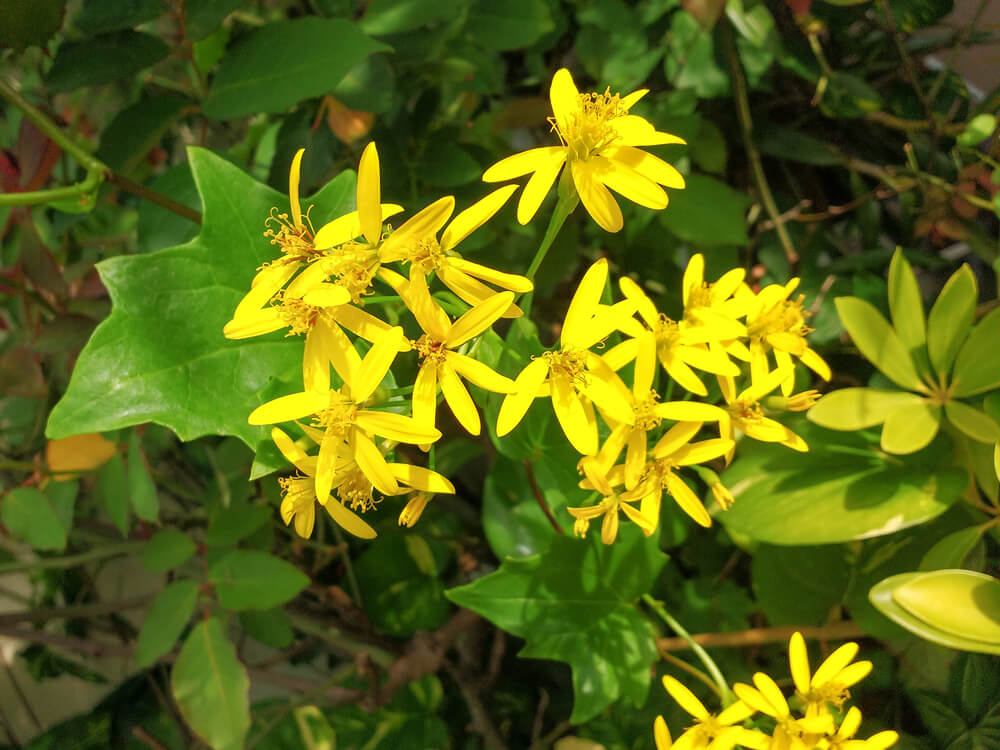
Most ivy plants have managed to gain favor among gardeners thanks to their fantastic foliage. However, this ivy, known as German ivy, comes with the added benefit of blooming with beautiful flowers as well. Those flowers have relatively long bright yellow petals that surround a textured yellow center. But while this plant’s blooms are great, don’t think its leaves are lacking. The foliage of the German ivy plant is a vibrant, glossy green, and each leaf has an irregular margin that makes for an interesting shape.
12. Boston Ivy (Parthenocissus tricuspidata)
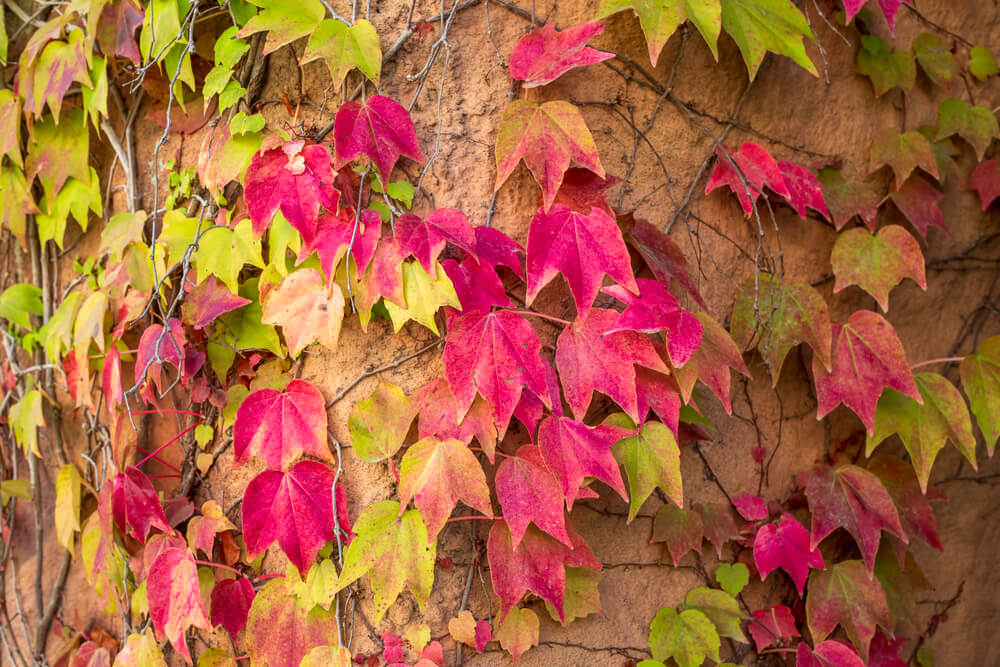
Boston ivy is a bit of a misnomer. This plant gets its common name because you can often find it growing on the brick wall of academic buildings on some of the most famous college campuses in the Boston area. But despite being prevalent in that area, this plant comes from Asia. You’ll be able to recognize Boston ivy by its large three-pointed leaves. Those leaves are deciduous, and they often turn a lovely shade of red during the fall months.
13. Virginia Creeper (Parthenocissus quinquefolia)
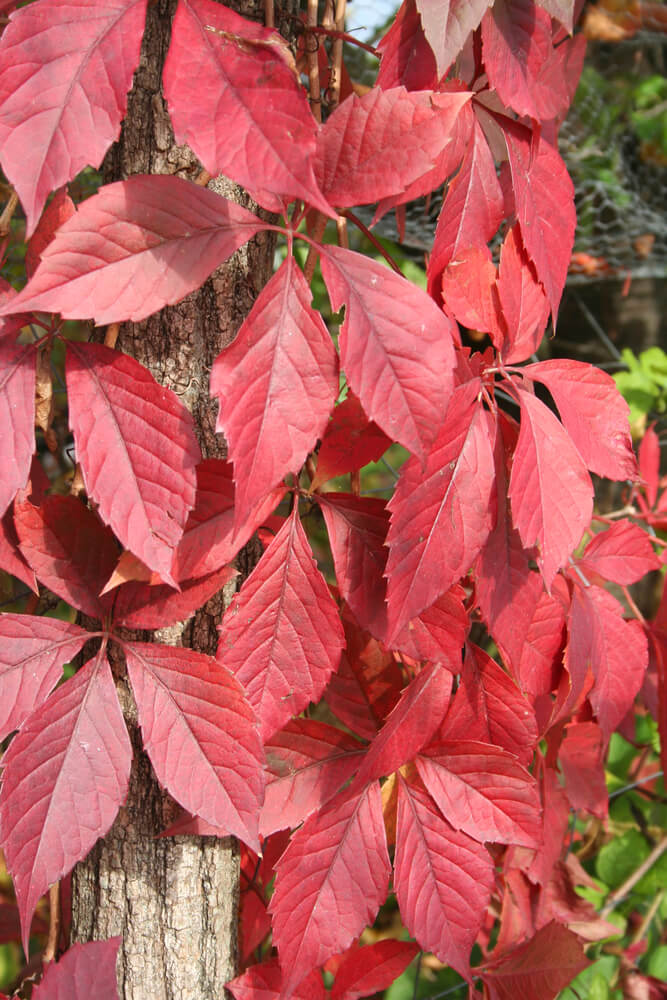
If you are familiar with the Latin language, you may have picked up on the fact that this plant’s botanical name implies the shape of its leaves. The Virginia creeper vine has leaves with five distinct parts, which is why it is also called the five-leaved ivy. As its common name implies, this plant is native to the eastern parts of the United States. In that region, it thrives in woodland settings, often as both a ground cover and a climbing plant that works its way up the trunks of large trees. During the fall, you’ll also enjoy the beautiful red color that the foliage takes on before the leaves fall. Since this plant is native to the United States, it is also a wise ecological choice for gardeners who live there, as the Virginia creeper helps support various forms of wildlife.
14. Swedish Ivy (Plectranthus australis)
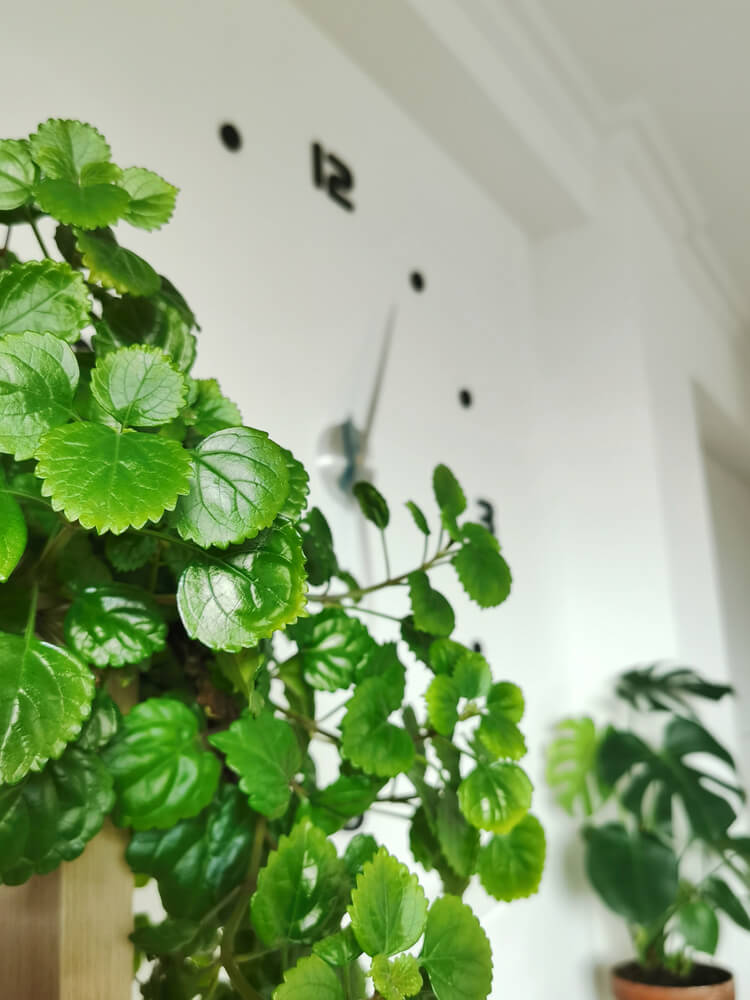
Swedish ivy is another popular indoor plant that gardeners throughout the world grow in their homes. Part of what makes this plant suitable for indoor growth is its ability to grow in pots. This species is also very good-looking, with round leaves that have wavy margins and a glossy dark green surface. During certain parts of the year, the Swedish ivy plant will bloom as well. The flowers it produces are small, off-white, and attached to thin vertical stems. However, if you choose to grow this plant, you should know that it requires a relatively high amount of light each day. Ideally, you’ll want to provide a Swedish ivy plant with 12 to 14 hours of direct sunlight for the best results. But even though that amount of light is preferred, the Swedish ivy plant can often survive with lower amounts of sun exposure, but it might be a bit less vigorous.
15. Variegated Swedish Ivy (Plectranthus australis ‘Marginatus’)
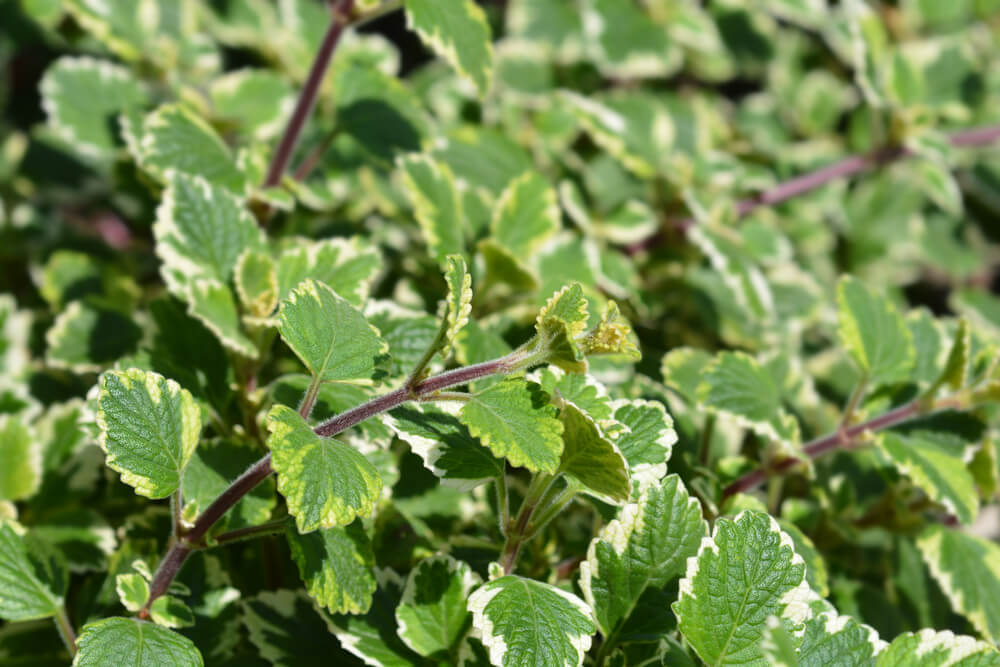
The variegated Swedish ivy is a lot like its parent species, Swedish ivy, except that it is perhaps even more attractive. Those who argue that that is the case point to the leaves of the variegated Swedish ivy plant, which are a slightly lighter green with subtle patches of white that appear along the wavy margins. As was true of Swedish ivy, the variegated Swedish ivy often grows as an indoor houseplant. It also tends to present very few problems to those who attempt to grow it. When caring for this plant, you typically won’t need to worry about pest or disease issues. As long as you provide nutrient-rich soil that is able to hold a moderate amount of moisture, then your variegated Swedish ivy is likely to thrive.
16. Poison Ivy (Toxicodendron radicans)
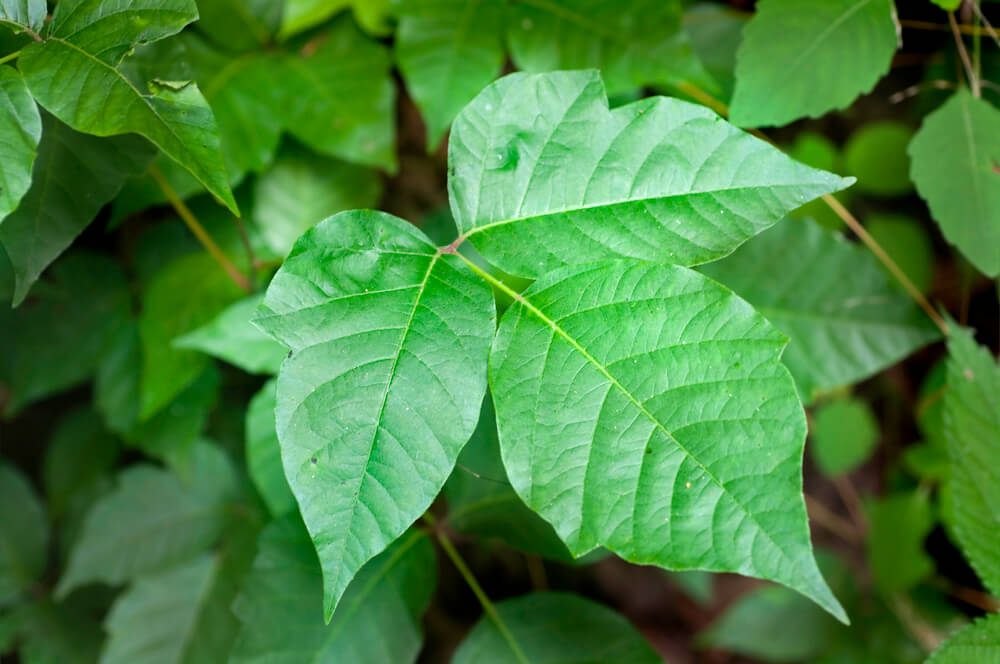
Although Devil’s ivy, which we mentioned earlier on this list, may have the most ominous name of all ivies, poison ivy is likely the most notorious of them all. By no means do we suggest growing poison ivy intentionally on your property. Instead, we mention it here so that you can identify, avoid, and remove it. Poison ivy has an infamous ability to cause pervasive red itchy rashes on the skin of those who come in contact with the oils its leaves secrete. Due to that toxicity, it is best to stay away from this plant at all costs. To achieve that, it helps to know what this plant looks like. Poison ivy plants are deciduous vines that hold their leaves in sets of three. Those leaves often have a shiny appearance thanks to the aforementioned oils they produce. The leaves can also vary in shape. At times, they are more of a perfect tapered oval, while other leaves on the same plant may have somewhat jagged margins.
[wp-faq-schema title=”Frequently Asked Questions About Types of Ivy Plants” accordion=1]The list above gives you a good understanding of the many ivy plants that exist. However, that list does not come close to answering all the possible questions you might have about ivies. In fact, even if you are well-versed in caring for species in this plant group, there’s a decent chance that you don’t know the answers to the questions below.
16 Incredible Types of Ivy Plants that Any Expert Gardener Should Know
You have now gained an introduction to a few of the most noteworthy ivy plants in the world and learned some general knowledge about this plant group. As you now know through reading this article, ivy plants are some of the most graceful and elegant climbing plants that you can own. Ivies hold foliage that comes in many different forms, and they are able to climb just about any surface you like. Now, all that’s left for you to do is pick the ivy that suits your garden best and get to planting.
